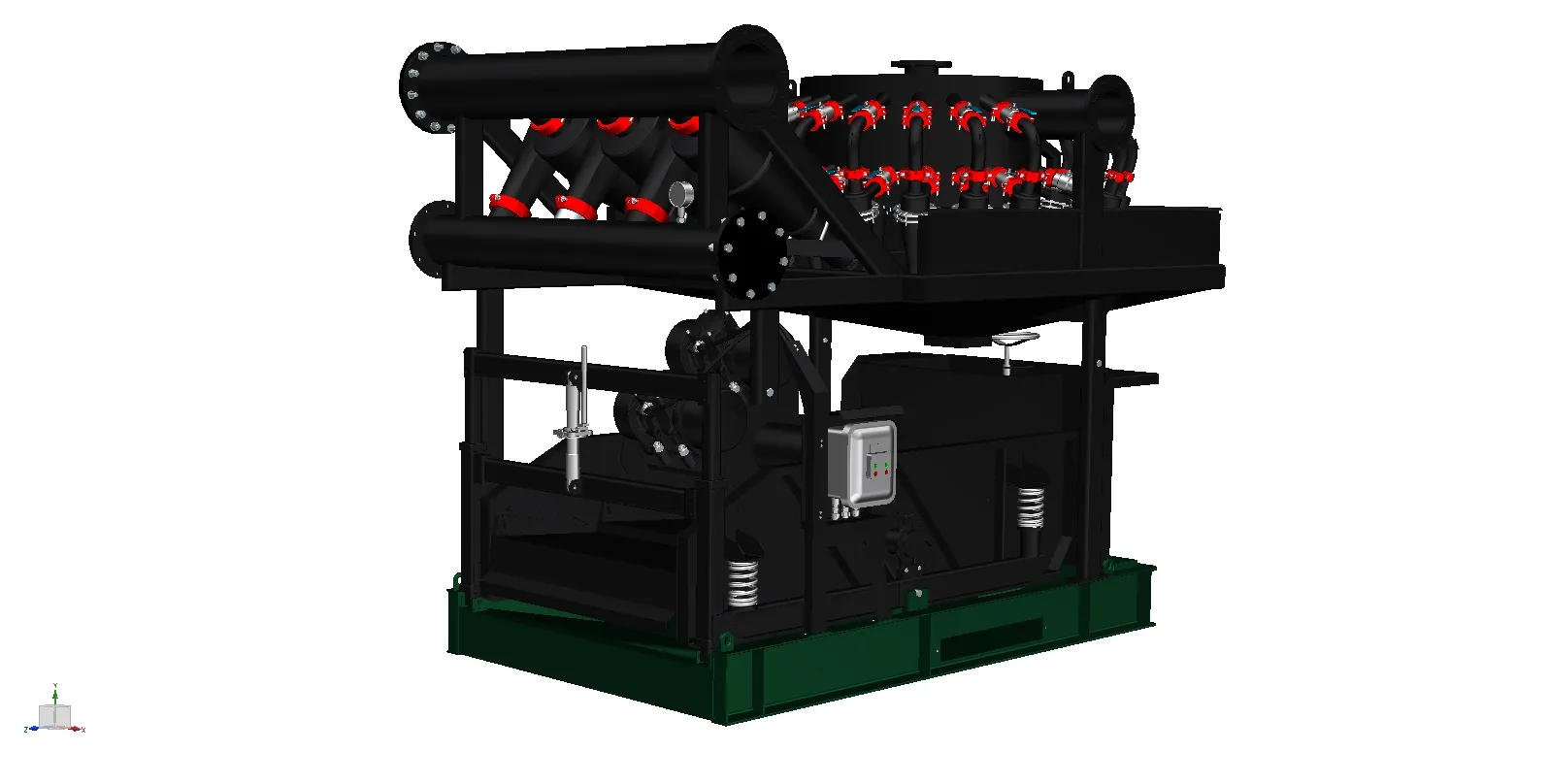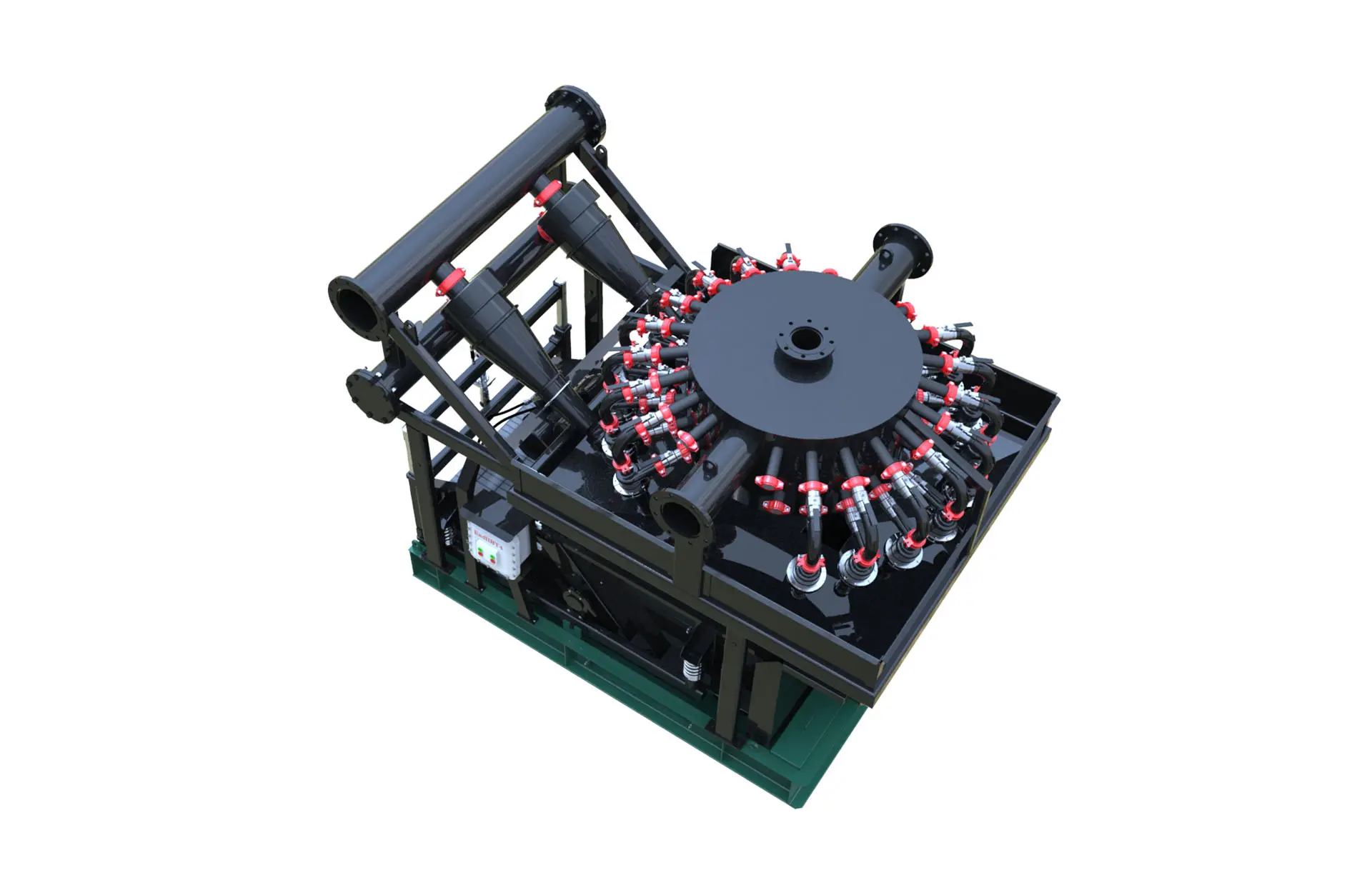악조건 드릴링 환경에서의 내구성 및 성능 예상
심층 드릴링, 지열 에너지, 고온 유정과 같은 혹독한 환경에서는 장비 신뢰성이 성공의 핵심 요소입니다. 무드 냉각 시스템 진공 냉각 시스템은 드릴링 유체 온도를 조절하는 데 중요한 역할을 하며, 이는 다운홀 공구 보호, 유체 특성 안정화 및 효율적인 열 관리를 보장합니다. 진공 냉각 시스템의 일반적인 수명을 파악하기 위해서는 제작 품질과 소재, 유지보수 방식, 운전 조건 등 여러 변수를 검토해야 합니다.
고정된 만료일보다는 시스템의 운영 수명은 설계, 설치 및 유지보수 상태에 따라 달라집니다. 무드 냉각 시스템 최적의 조건에서 운용되고 정기적으로 유지보수되는 잘 설계된 시스템은 10년 이상 일관된 서비스를 제공할 수 있습니다. 반면, 혹독한 환경, 방치 또는 부적절한 시스템 설계는 수명을 급격히 단축시킬 수 있습니다. 이러한 요소들을 평가함으로써 이해관계자들은 시스템 투자, 업그레이드 및 수명 주기 계획에 대해 정보에 기반한 결정을 내릴 수 있습니다.
시스템 수명에 영향을 미치는 요소
물질 품질 및 건설 표준
머드 냉각 시스템 수명에 가장 결정적인 요소 중 하나는 사용된 자재의 질입니다. 열교환기, 펌프, 밸브 및 배관과 같은 부품은 자주 마모성 유체, 고온 및 잠재적 부식 요소에 노출됩니다. 스테인리스강, 티타늄 또는 코팅 합금과 같은 자재를 사용하면 부식과 기계적 마모에 대한 저항성을 높일 수 있습니다.
정밀 용접 및 보강된 이음새를 포함한 고품질 건설 기술은 구조적 완전성에 기여합니다. 유전 및 지열 발전 작업을 위한 국제 규격을 충족하도록 설계된 시스템은 초기 손상 없이 지속적으로 사용할 가능성이 높습니다. 운영자는 인증서 및 시험 데이터로 입증된 내구성을 갖춘 시스템을 선택해야 합니다.
환경 조건 및 작동 스트레스
진동 냉각 시스템이 작동하는 환경 조건은 수명에 큰 영향을 미칩니다. 극단적인 온도, 염분이 많은 공기 또는 모래에 노출되기 쉬운 해상 시추 플랫폼 또는 사막 작업 현장에서 시스템 구성 요소는 지속적인 환경 스트레스를 받습니다.
또한 시스템의 열 부하는 진흙 온도, 굴진 깊이, 굴진 속도에 의해 결정되며, 이는 열교환기와 펌프에 기계적 응력을 가하게 됩니다. 최대 용량 근처에서 작동하는 시스템은 중복성과 안전 마진을 고려해 설계하지 않으면 고장이 발생할 가능성이 더 높습니다. 정기적인 모니터링과 현장 특성에 맞게 시스템을 조정하면 운전 수명을 연장할 수 있습니다.
정비 및 사용 수명 최적화
예방적 유지 보수 전략
정기적인 정비는 진흙 냉각 시스템의 수명을 극대화하기 위한 가장 효과적인 방법 중 하나입니다. 예방적 조치로 열교환기 표면 점검, 침전물 제거, 움직이는 부품의 윤활, 씰 교체 등을 정기적으로 수행해야 합니다. 마모나 부식이 초기 단계에서 발견된다면 전체 시스템에 치명적인 결함을 방지할 수 있습니다.
정비 주기는 제조사의 권장사항을 기준으로 해야 하지만 실제 사용 조건에 맞게 조정되어야 합니다. 센서 측정값, 유량, 온도 변화 등의 데이터를 기반으로 한 정비 계획을 실행함으로써 정비 시점을 적절히 조절하고 비용을 절감할 수 있습니다.
모니터링 및 진단 도구
최신 슬러리 냉각 시스템은 온도 및 압력 센서, 유량계, 진동 감지 장치 등 중앙 제어 장치에 연결된 디지털 모니터링 도구에 점점 더 의존하고 있습니다. 이러한 도구는 실시간으로 시스템 상태를 평가할 수 있으며, 측정값의 이상이 펌프 캐비테이션(cavitation), 오염 또는 부분적인 차단과 같은 초기 문제 발생 신호가 될 수 있습니다.
이러한 진단 시스템을 예지 정비(Predictive Maintenance) 소프트웨어와 통합하면 부품 고장을 예측하고 문제가 심각해지기 전에 교체 시기를 계획할 수 있습니다. 이는 시스템 수명을 연장할 뿐만 아니라 예기치 못한 고장으로 인한 다운타임과 운영 위험을 최소화합니다.

설계 및 설치 방법
적절한 용량 선정의 중요성
용량이 부족하거나 과다한 시스템은 불필요한 부하와 비효율을 겪게 됩니다. 용량이 부족한 진동수 냉각 시스템은 지속적으로 최대 용량으로 작동하여 과도한 사용으로 인해 부품 수명이 단축됩니다. 반면, 용량이 과다한 시스템은 작동 사이클이 너무 잦아지면서 마모와 에너지 낭비를 초래할 수 있습니다.
설계 단계에서 정확한 열 모델링과 부하 계산을 통해 진동수 냉각 시스템이 최적의 파라미터 내에서 작동하도록 보장합니다. 예상되는 굴착 깊이, 유체 특성 및 환경 온도를 고려함으로써 올바른 용량과 구성 방안을 선택할 수 있습니다.
설치 품질 및 시스템 배치
아무리 잘 설계된 머드 냉각 시스템이라도 올바르게 설치하지 않으면 조기 마모가 발생할 수 있습니다. 펌프 정렬 불량, 부적절한 배관 경로, 또는 부적절한 단열재는 기계적 고장 및 열 효율 저하로 이어질 수 있습니다. 또한, 센서를 잘못 배치하면 데이터 정확도가 낮아져 시스템 조정이 제대로 이루어지지 않을 수 있습니다.
전문 설치 팀은 시스템 무결성을 보장하기 위해 모범 사례와 품질 보증 기준을 따라야 합니다. 유지보수 접근을 위한 공간 확보, 진동 분리 조치, 환경 요인으로부터의 보호는 설치 과정에서 필수적으로 고려되어야 합니다.
기술 발전 및 수명 연장
모듈식 및 확장 가능한 설계 개념
최신 고급 진흙 냉각 시스템은 종종 모듈식 구성 요소를 사용하여 제작됩니다. 이를 통해 전체 시스템을 다시 구축하지 않고도 개별 유닛을 확장하거나 교체할 수 있습니다. 하나의 모듈이 수명 한계에 도달하면 다른 구역에 영향을 주지 않고 교체할 수 있습니다.
이러한 모듈성은 운영 유연성을 높일 뿐만 아니라 전체 시스템 수명도 연장시킵니다. 운영자는 제어판, 펌프 또는 열교환기와 같은 핵심 구성 요소를 개별적으로 업그레이드함으로써 새로운 드릴링 기술이나 환경적 도전에 맞게 시스템을 적응시킬 수 있습니다.
스마트 자동화 및 효율 최적화
자동화 기술은 머드 냉각 시스템을 관리하는 방식을 혁신적으로 변화시켰습니다. 자동 제어 장치는 실시간 데이터를 기반으로 유량, 온도, 펌프 사이클을 조절합니다. 이러한 지능형 적응은 에너지 소비를 줄이고 과열을 방지하며 구성 요소의 마모를 최소화합니다.
스마트 시스템은 시간이 지남에 따라 성능 추세를 파악할 수 있도록 운영 데이터를 기록합니다. 과거 데이터는 특정 구성 요소의 수명 종료 징후를 예측하고 상태 기반 예방 정비 일정을 수립하는 데 도움이 됩니다.
시스템 수명 주기에서의 경제적 고려사항
소유 비용 대 교체 비용
머드 냉각 시스템의 일반적인 수명을 평가할 때에는 단순히 초기 구매 가격이 아닌 총소유비용(TCO)을 고려하는 것이 중요합니다. 유지보수 비용, 에너지 소비, 다운타임 비용 등의 요소들이 시스템의 경제적 가치에 영향을 미칩니다.
경우에 따라 오래된 머드 냉각 시스템을 리퍼비시하거나 개조하는 것이 교체보다 더 경제적일 수 있습니다. 그러나 새로운 기술들이 에너지 효율성이나 신뢰성을 현저히 향상시킨다면 오래된 시스템을 교체함으로써 장기적으로 더 나은 투자 수익률을 얻을 수 있습니다.
재판매 및 리퍼비시 가치
고품질의 머드 냉각 시스템은 여러 해 동안 사용한 후에도 상당한 가치를 유지하는 경우가 많습니다. 열교환기 및 제어판과 같은 부품들은 특히 최고의 관행에 따라 유지관리가 잘 되었다면 리퍼비시하여 재사용할 수 있습니다.
일부 제조사나 서비스 회사는 매입 환불이나 리퍼비시 프로그램을 제공합니다. 이러한 프로그램은 신규 시스템 투자 비용을 상쇄하고 여러 개의 드릴링 프로젝트에 걸쳐 장비의 지속 가능한 사용을 촉진할 수 있습니다.
업계 경험을 기반으로 한 수명 기준
주요 구성품의 예상 서비스 기간
현장 데이터와 업계 경험을 바탕으로 한 진흙 냉각 시스템 구성품의 일반적인 수명 기준은 다음과 같습니다:
열교환기: 10~15년
펌프 및 모터: 5~10년
밸브 및 씰: 3~5년
제어 시스템: 7~10년
이 범위는 사용 강도, 환경 조건, 유지보수 품질에 따라 달라질 수 있습니다. 운영자는 상세한 정비 기록을 보관하고 시간 기반 추정치에만 의존하기보다는 실제 성능에 따라 부품 교체를 계획해야 합니다.
업계 관행 및 장기 계획
경험 많은 운영자들은 장기적인 성능이 장비 품질뿐만 아니라 능동적인 관리에도 의존한다는 것을 알고 있습니다. 예비 부품 재고, 업그레이드 계획 수립, 기술 평가를 포함한 라이프사이클 관리 방식을 도입하면 진동 냉각 시스템이 운영 수명 동안 지속적으로 효과적으로 작동할 수 있습니다.
시스템 성능을 동료 운영과 비교하는 것은 올바르게 수행될 경우 유용한 인사이트를 제공할 수 있습니다. 그러나 직접적인 비교 시에는 현장별 온도, 유체 종류 및 드릴링 전략의 차이를 고려해야 합니다.
자주 묻는 질문
정기적으로 관리되는 진동 냉각 시스템은 얼마나 오래 사용할 수 있나요?
정기적으로 관리되는 진동 냉각 시스템은 일반적으로 10~15년 동안 사용할 수 있습니다. 내구성은 재질의 품질, 운전 조건, 정기적인 예방 유지보수에 따라 달라집니다.
진동 냉각 시스템의 수명을 연장하는 데 도움이 되는 유지보수 작업은 무엇인가요?
열교환기 정기 점검, 침전물 제거, 펌프 윤활, 센서 데이터 모니터링과 같은 작업은 시스템 수명을 연장하기 위해 중요합니다. 예지 정비 도구도 이에 크게 기여합니다.
노후화된 진동 냉각 시스템을 개량하는 것이 나은지 아니면 교체하는 것이 더 나은지 궁금하십니까?
시스템의 상태와 이용 가능한 기술에 따라 달라집니다. 대부분의 경우, 핵심 부품을 개량하면 효율성을 회복하고 수명을 연장할 수 있습니다. 전반적인 교체는 현대 시스템이 훨씬 뛰어난 성능이나 에너지 절감 효과를 제공할 경우 더 유리할 수 있습니다.
환경 조건이 시스템 수명을 단축시킬 수 있습니까?
예, 고온, 먼지 또는 염분에 노출된 혹독한 환경에서는 마모가 가속화될 수 있습니다. 적절한 재료 선택, 보호 코팅 및 차폐 조치를 통해 이러한 영향을 완화하고 시스템의 무결성을 유지할 수 있습니다.

